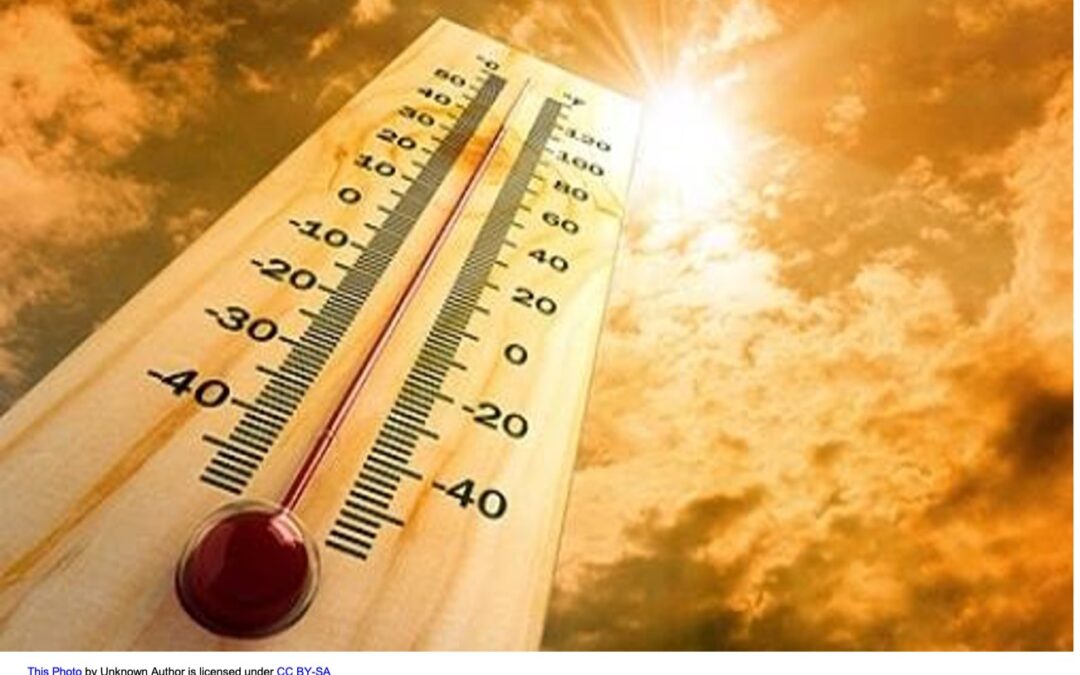The Centers for Disease Control (CDC) commented that many areas of the country experience extreme seasonal temperatures during summer and the news about lives lost due to heat stroke. While newscasters warn to stay out of the heat, many workers do not have that option. Keeping workers cool and well-hydrated are the best ways to protect them when working in hot environments.
Existing heat illness prevention programs and policies can be tailored to the unique challenges of working during the COVID-19 pandemic. (See source below.)
New App for Heat Stress Awareness (Go to Google or the Apple App Store)

Risk Factors for Heat Illness
Workers should be made aware of the many risk factors that may affect their heat tolerance. Risk factors that may influence heat illness include high air temperatures and humidity, direct sun exposure, indoor radiant heat sources (ovens, hot manufacturing processes, etc.), limited air movement, physical exertion, not drinking enough fluids (dehydration), personal protective equipment or clothing, certain medications, physical condition, lack of recent exposure (not acclimatized), and advanced age (65+). Workers should discuss their individual risk factors with their healthcare provider.
Staying Hydrated
The average person has 2.6 million sweat glands. These glands are activated when a portion of the brain determines that the body needs to be cooled down. Sweat evaporates off our skin which allows for heat loss and cooling. However, when we sweat, we also lose water and electrolytes (i.e., “salts” such as sodium, chloride, potassium). Drinking enough water and having enough electrolytes is necessary for our bodies to function properly. This is why it is so important to stay hydrated; a dehydrated person is likely to start having symptoms of heat illness.
The Myths About Heat Stress – False Statements
- The difference between heat exhaustion and heat stroke is there is no sweating with heat stroke.
- Taking a break in the air conditioning will ruin your acclimatization.
- Acclimatization will protect you during a heat wave.
- Salt tablets are a great way to restore electrolytes lost during sweating.
- My medications/health condition will not affect my ability to work safely in the heat.
The best PREVENTION: WATER, REST AND SHADE
https://www.osha.gov/heat-exposure/water-rest-shade
NIOSH Heat Illness Resources
NIOSH is working with the Occupational Safety and Health Administration (OSHA) and other partners to provide heat illness information for employers and workers. Please share with us how you stay cool on the job. For additional information on heat stress, heat illnesses, and hot environments see:
- OSHA-NIOSH Infosheet: Protecting Workers from Heat Illness
- NIOSH Fast Facts: Protecting Yourself from Heat Stress
- NIOSH Workplace Safety and Health Topic: Heat Stress
- NIOSH Criteria for a Recommended standard: Occupational Exposure to Heat and Hot Environments
Spencer-SHE has been providing Safety, Health and Environmental Compliance Guidance since 1980, offering clients cost-effective, turn-key solutions. Contact us here to help you to develop and maintain a safe and healthy workforce.
Sources:
Keeping Workers Hydrated and Cool Despite the Heat | Blogs | CDC
Employer Information for Heat Stress Prevention during the COVID-19 Pandemic | CDC

